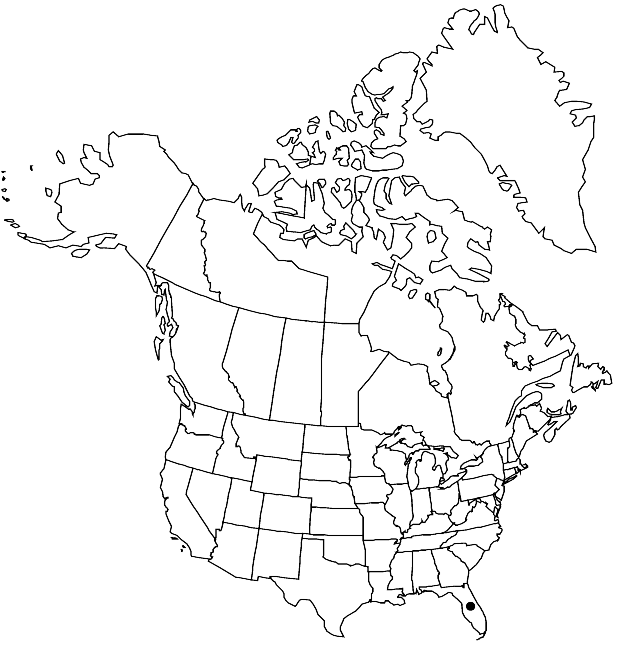Difference between revisions of "Cleoserrata speciosa"
Novon 17: 448. 2007.
FNA>Volume Importer |
imported>Volume Importer |
||
| (3 intermediate revisions by 2 users not shown) | |||
| Line 11: | Line 11: | ||
|name=Cleome speciosa | |name=Cleome speciosa | ||
|authority=Rafinesque | |authority=Rafinesque | ||
| + | |rank=species | ||
|publication_title=Fl. Ludov., | |publication_title=Fl. Ludov., | ||
|publication_place=86. 1817 | |publication_place=86. 1817 | ||
| Line 17: | Line 18: | ||
|name=Cleome speciosissima | |name=Cleome speciosissima | ||
|authority=Deppe ex Lindley | |authority=Deppe ex Lindley | ||
| + | |rank=species | ||
}} {{Treatment/ID/Synonym | }} {{Treatment/ID/Synonym | ||
|name=Gynandropsis speciosa | |name=Gynandropsis speciosa | ||
|authority=de Candolle | |authority=de Candolle | ||
| + | |rank=species | ||
}} | }} | ||
|hierarchy=Cleomaceae;Cleoserrata;Cleoserrata speciosa | |hierarchy=Cleomaceae;Cleoserrata;Cleoserrata speciosa | ||
| Line 35: | Line 38: | ||
|elevation=0-50 m | |elevation=0-50 m | ||
|distribution=Fla.;Mexico;West Indies;Central America;South America. | |distribution=Fla.;Mexico;West Indies;Central America;South America. | ||
| + | |introduced=true | ||
|discussion=<p><i>Cleoserrata speciosa</i> is widespread horticulturally (with white-flowered plants not uncommon). It strongly resembles <i>Tarenaya hassleriana</i> (<i>Cleome</i> hassleriana) to the untrained eye (W. R. Ernst 1963b); considering its unique floral morphology and cytology, it remains difficult to place.</p> | |discussion=<p><i>Cleoserrata speciosa</i> is widespread horticulturally (with white-flowered plants not uncommon). It strongly resembles <i>Tarenaya hassleriana</i> (<i>Cleome</i> hassleriana) to the untrained eye (W. R. Ernst 1963b); considering its unique floral morphology and cytology, it remains difficult to place.</p> | ||
|tables= | |tables= | ||
| Line 44: | Line 48: | ||
-->{{#Taxon: | -->{{#Taxon: | ||
name=Cleoserrata speciosa | name=Cleoserrata speciosa | ||
| − | |||
|authority=(Rafinesque) H. H. Iltis | |authority=(Rafinesque) H. H. Iltis | ||
|rank=species | |rank=species | ||
| Line 60: | Line 63: | ||
|publication year=2007 | |publication year=2007 | ||
|special status= | |special status= | ||
| − | |source xml=https:// | + | |source xml=https://bitbucket.org/aafc-mbb/fna-data-curation/src/2e0870ddd59836b60bcf96646a41e87ea5a5943a/coarse_grained_fna_xml/V7/V7_303.xml |
|genus=Cleoserrata | |genus=Cleoserrata | ||
|species=Cleoserrata speciosa | |species=Cleoserrata speciosa | ||
Latest revision as of 22:32, 5 November 2020
Plants 50–150 cm. Stems unbranched or sparsely branched; (fluted), glabrous or sparsely glandular-pubescent. Leaves: petiole 2–12 cm,(glandular-pubescent); leaflets 5–9, blade narrowly lanceolate-elliptic, 6–15 × 1–5 cm, margins entire or serrulate, apex subobtuse, surfaces glabrate to glandular-pubescent. Racemes 15–50 cm (20–60 cm in fruit, glandular-pubescent); bracts unifoliate, ovate-cordate, 3–18 mm. Pedicels 10–50 mm, (glabrous). Flowers: sepals persistent, green, lanceolate, 4–7 × 0.8–1.2 mm, glandular-pubescent; petals usually brilliant pink to purple, fading to pink or white, rarely initially white, ovate, 15–42 × 8–11 mm, clawed; stamens green, 40–85 mm, (filaments adnate to gynophore 1/3–1/2 of length); anthers 6–10 mm; gynophore 30–85 mm in fruit (filament scars visible ca. 1/4 of length); ovary 6–10 mm; style 1–1.2 mm. Capsules (irregularly contracted between seeds) 60–150 × 3–5 mm. Seeds pale green to brown, 2.5–3.5 × 1–1.2 mm, tuberculate. 2n = 48.
Phenology: Flowering summer.
Habitat: Disturbed roadsides, vacant lots
Elevation: 0-50 m
Distribution

Introduced; Fla., Mexico, West Indies, Central America, South America.
Discussion
Cleoserrata speciosa is widespread horticulturally (with white-flowered plants not uncommon). It strongly resembles Tarenaya hassleriana (Cleome hassleriana) to the untrained eye (W. R. Ernst 1963b); considering its unique floral morphology and cytology, it remains difficult to place.
Selected References
None.